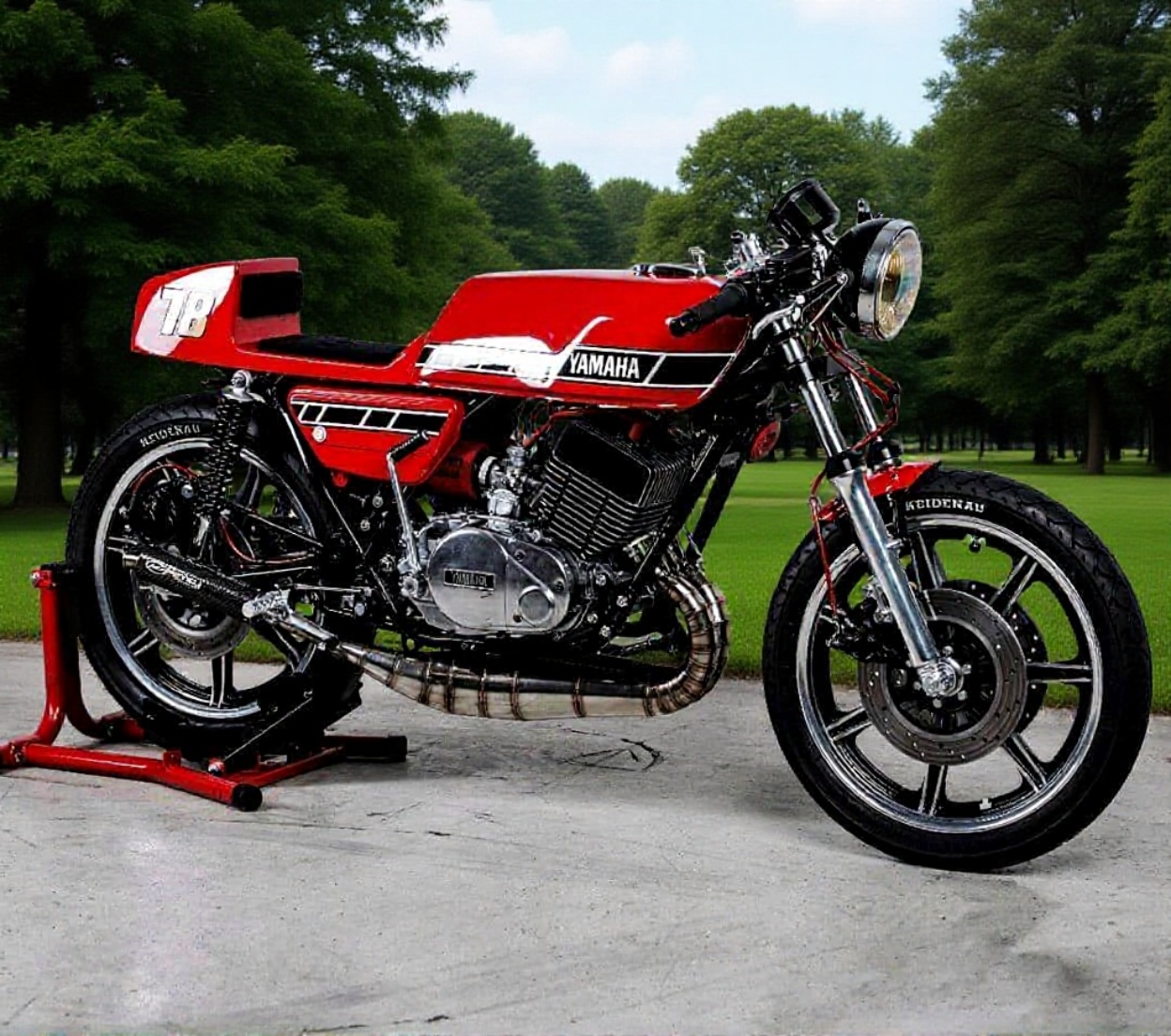- Posted on
- • Performance
Expansion chambers for performance tuning on vintage rigs
- Author
-
-

- User
- Torque
- Posts by this author
- Posts by this author
-

Expansion Chambers for Performance Tuning on Vintage Rigs
Why a hand-bent cone of 1960s steel is still the cheapest horsepower you can bolt to a two-stroke scooter.
1. What an Expansion Chamber Actually Does
- Sound-wave super-charger: the divergent cone creates a negative pulse that sucks exhaust (and a little fresh charge) out; the convergent cone then sends a positive pulse back, ramming the un-burnt mixture into the cylinder just before the port closes – free compression boost.
- Result on a stock 150 cc Lambretta: +4-6 bhp, +15 km/h top speed, -2 km/l consumption (because you'll pin the throttle more often).
2. Golden-Age Pipes – 1950s Theory, 1970s Showrooms
- Walter Kaaden (MZ, 1955) discovered the maths; Italian scooter makers copied it by 1960.
- Lambretta "S" pipe (1961) – first factory expansion chamber; Vespa SS180 (1965) used a bulbous rear-box that is basically a folded chamber.
- Race tuners (Italjet, Pinasco, JL) hand-bent 0.9 mm mild-steel cones on logarithmic templates – each pipe took 3 hrs, no two were identical.
3. Anatomy of a Vintage-Rig Pipe
| Section | Job | Tuning Trick |
|---|---|---|
| Head-pipe | Initial pulse speed | Longer = more bottom-end; shorter = top-end hit |
| Divergent cone | Creates suction | Steeper angle (8-10°) = stronger suck, but narrower power band |
| Belly | Wave timing | Longer belly delays positive return – good for high-rpm pipes |
| Convergent cone | Ram charge back | Shallower angle (6°) = broader band, steeper = peakier |
| Stinger | Bleed pressure | Smaller ID = more back-pressure, torquier, hotter running |
Change any one dimension >3 mm and you've built a different pipe.
4. Bolt-On vs. Hand-Built – Which for Your 1965 Vespa?
A. Plug-&-Play Vintage Look
- JL "RZ" right-hand pipe – copper-plated, welded seam, looks 1962, adds +4 bhp on 150 cc.
- SIP "Road" for Vespa PX – chrome, quiet insert, +5 km/h, no jet change required – MOT-friendly.
B. Period-Correct Hand-Built
- Start with 0.9 mm mild-steel – easy to weld, cheap, period correct.
- Use 2-stroke software (Build-and-Click "2-Stroke Wizard") – inputs: bore, stroke, port timing, desired peak rpm → prints cone template.
- Hydro-forming hack: weld two flat sheets, fill with water, pressurise to 60 bar – cones balloon perfectly.
Cost: £60 in steel, 3 Saturdays, dyno time £80 – result = bespoke pipe that no-one else owns.
5. Dyno-Proven Gains on Common Vintage Set-Ups
| Scooter | Pipe | Before | After | Gain |
|---|---|---|---|---|
| Lambretta Li 150 std | JL RZ 150 | 7.2 bhp @ 5,200 | 10.8 bhp @ 6,000 | +3.6 bhp |
| Vespa PX200 std | SIP Road 200 | 10.5 bhp @ 5,000 | 13.1 bhp @ 5,700 | +2.6 bhp |
| Vespa 125 (Malossi 166) | Hand-built hydro-form | 9.1 bhp @ 6,000 | 14.3 bhp @ 7,200 | +5.2 bhp |
Rule-of-thumb: every 1 bhp gained = +2 km/h top speed on a stock-geared vintage rig.
6. Jetting & Timing – Don't Cook Your Piston
- Main jet up 2-3 sizes – more mixture in pipe = leaner combustion.
- Ignition retard 1-1.5° – cooler running, prevents hole in piston when positive wave arrives early.
- Oil mix: stay 25:1 mineral – synthetic can't handle >250 °C stinger temps on long WOT runs.
Plug-chop after 10 km – chocolate brown = happy, white = jet up, black = jet down or stinger too small.
7. Sound & Fury – Keeping the Neighbours (and MOT) Happy
- dB killer insert – drops 3 dB, costs 1 bhp, slides out in 30 sec for track-day.
- Wrap stinger with 1 m stainless mesh – kills "tinny" two-stroke bark, keeps period look.
- UK MOT: < 99 dB static @ ¾ rpm – most vintage pipes hit 96-98 dB with insert fitted.
8. Restoration Ethics – Can You Still Look 1962?
- Copper-plate the finished pipe – ages to brown-penny patina in 6 months – dead ringer for 1960s Italian factory pipe.
- Stamp your own part-number using 3 mm letter punches – concourse judges love period-correct font.
- Keep original dented pipe in box – proves you didn't butcher history, just gave it a louder voice.
9. When Not to Fit an Expansion Chamber
- Stock 50 cc moped – pipe won't wake up until 45 mph; you'll lose low-speed torque and gain nothing below 35 mph.
- Already noisy engine – expansion chamber amplifies everything; police will hear you 2 km away.
- Concours "survivor class" – judge wants factory paint on factory pipe; save the chamber for the ride home.
10. Quick-Fire FAQ
Q1. Will an expansion chamber fit under a Vespa leg-shield?
Yes – right-hand "banana" pipe hugs crank-case; you lose glove-box space but keep shield lines.
Q2. Do I need to re-jet straight away?
Yes – pipe leans mixture; jet up 2 sizes minimum or you'll seize.
Q3. Can I weld my own with a MIG welder?
MIG works but leaves slag inside cone; TIG or oxy-acetylene gives cleaner, thinner seams.
Q4. Is chrome pipe weaker than mild-steel?
Chrome is only 0.02 mm skin – strength comes from steel; re-chrome after welding for looks, not performance.
Q5. How much louder is "loud"?
+8-10 dB (perceived twice as loud); insert drops 3 dB – still louder than stock, but neighbour-tolerable.
Bottom Line
Bolt-on 1960s chrome, hand-bent cones in your garage, or hydro-formed art-piece – an expansion chamber is still the cheapest, loudest and most effective way to wake a vintage two-stroke from its smoky slumber.
Jet it, time it, insert it, then let the cone sing – because nothing says "I love the 60s" like blue smoke echoing off a perfectly tuned steel megaphone.
